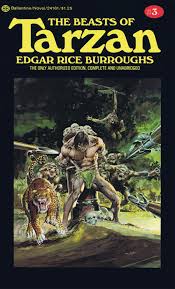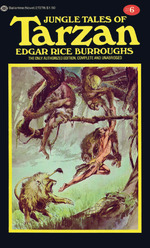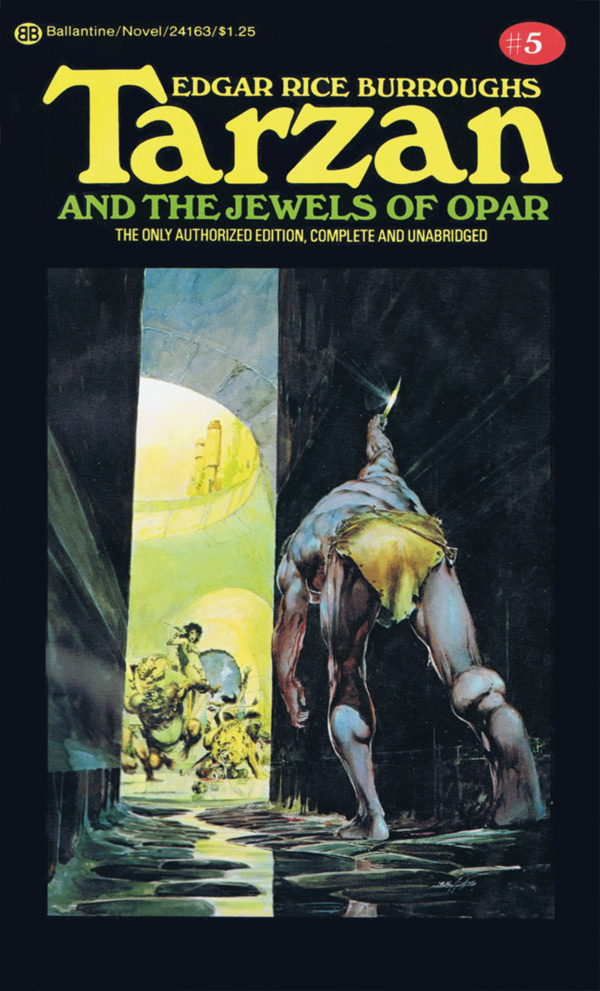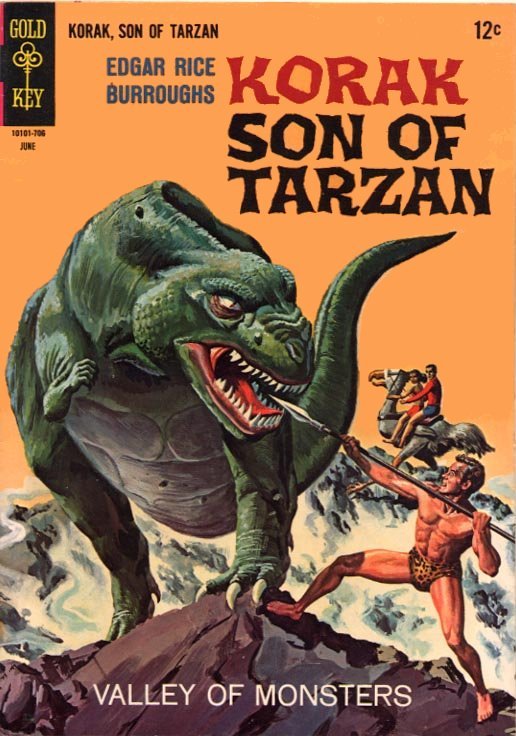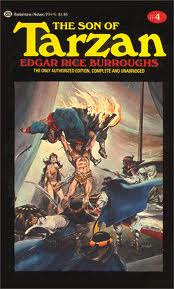The Great Tarzan Adventure #7: Tarzan the Untamed
 Tuesday, August 26, 2014 at 06:32PM
Tuesday, August 26, 2014 at 06:32PM 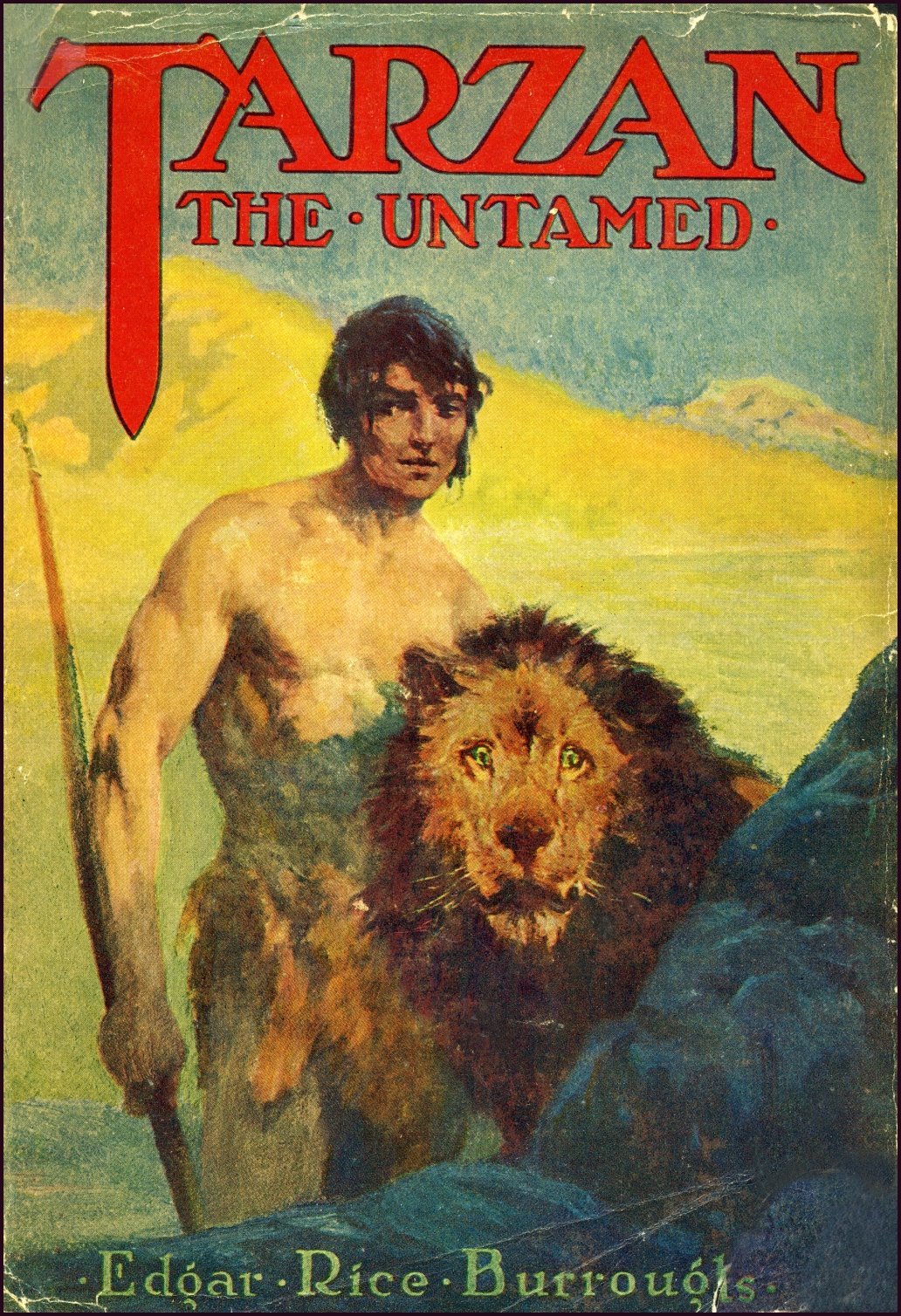 There’s a lot to be excited about in ERB’s seventh Tarzan adventure. Tarzan the Untamed begins as a tale of revenge for the murder of his beloved Jane. By the end of the story, Tarzan has not only fought the Germans in WWI but has also stumbled upon another lost city. No spoilers there; it’s all on the back cover blurb. After the disappointment of the last book, I was definitely ready for a change, and this book seemed to offer it. As you may know, I loved the revenge story of Beasts, and I love me a good lost civilization story. And how can any story go wrong by throwing in some pulpy war action into the mix. When all was said and done, I wasn’t thrilled out of my socks, but I was ready to leap into the next volume.
There’s a lot to be excited about in ERB’s seventh Tarzan adventure. Tarzan the Untamed begins as a tale of revenge for the murder of his beloved Jane. By the end of the story, Tarzan has not only fought the Germans in WWI but has also stumbled upon another lost city. No spoilers there; it’s all on the back cover blurb. After the disappointment of the last book, I was definitely ready for a change, and this book seemed to offer it. As you may know, I loved the revenge story of Beasts, and I love me a good lost civilization story. And how can any story go wrong by throwing in some pulpy war action into the mix. When all was said and done, I wasn’t thrilled out of my socks, but I was ready to leap into the next volume.
Without further aideu, here’s what I liked and what I didn’t. Spoilers beyond this point.
Here’s what I liked:
The Revenge Story: I don’t know what it is, but Burroughs does revenge yarns well, with Tarzan anyway. I suppose it’s because Tarzan doesn’t allow himself to be restrained by “civilized” conceits. He does what he sees as fitting and just, no matter how bloody the outcome may be. I think it’s here where we see Tarzan at his most primal. It’s frightening at times. I like it.
WWI Story: Didn’t expect this one, but it was really cool seeing Tarzan fighting the Germans during the Great War. Of course, this was tied into the revenge tale, but it was very different to me. I mean, here’s the Lord of the Jungles running through the trenches. I don’t ever recall trenches in Africa, so this historical elelment is suspect. I liked it nonetheless.
The Lost City of Xuja: I really liked this lost world tale. When Tarzan finds the skeletal remains of what appears to be a Conquistador, I got chills. And then the city itself was bizzarre and eerie. When the maniac inhabitants begin wailing for no reason at random times – wow. Creepy. Very pulpy, and very much in the vein of the sword and sorcery tradition. The lions the inhabitant used were cool, too. The birds . . . not so much.
Here’ s what I didn’t like so much:
Lady Spy: She sort of tied both stories together, and she sort of gave us the “civilized” perspective of watching Tarzan during the course of the novel. So, I see why she’s there. I think it was the her-wanting-Tarzan-to-love-her thing. I knew she wasn’t a German, despite what Tarzan thought. I guess you could call this the Burroughsian mistaken identity/love/hate relationship that most of his heroes indure in their first books. Maybe I like her more than I thought . . .
Tarzan’s cruelty: Animals are verocious. They track, they hunt, they kill. But they are not cruel. We’ve seen this streak in previous novels, but now it’s getting old. He traps a lion and starves it. You may say, well, it was because he was going to feed a German to it Well, I say, he trapped the lion well before he thought of feeding it a German. And yeah, he had the lion as a companion – briefly – but it was only after he had beaten into submission. In fact, his cruelty really makes me not like him as a character at times.
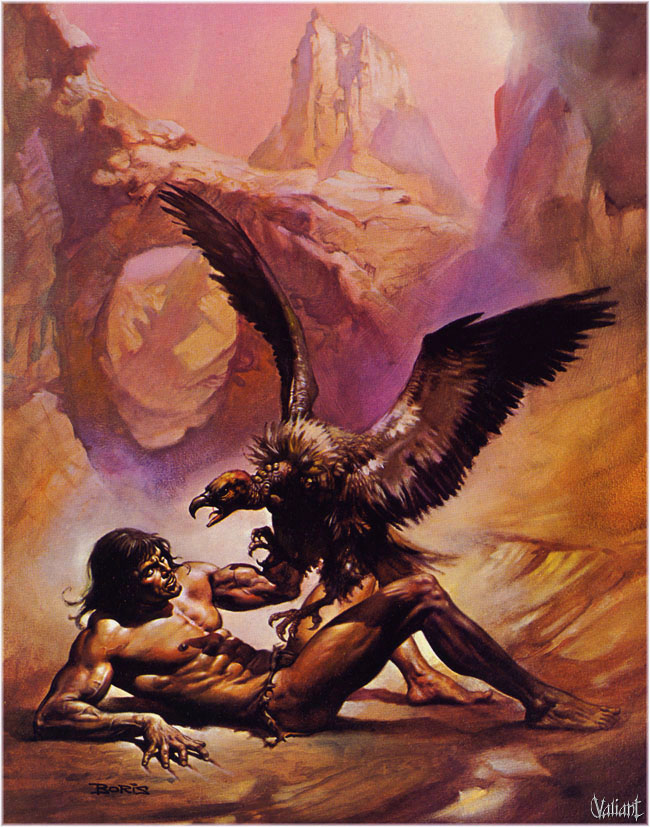 Two Tales: The novel really felt like two different stories. It was a war story AND a lost world story. Yes, he pulled them together with Lady Spy, but I think the revenge story could have been played out more along the lines of Beasts. At least the Xuja story was better, in my opinion, than the previous the Opar story. In fact, he spent more time in Xuja than he did in Opar in the entire Jewels of Opar novel.
Two Tales: The novel really felt like two different stories. It was a war story AND a lost world story. Yes, he pulled them together with Lady Spy, but I think the revenge story could have been played out more along the lines of Beasts. At least the Xuja story was better, in my opinion, than the previous the Opar story. In fact, he spent more time in Xuja than he did in Opar in the entire Jewels of Opar novel.
So there you go. I liked Tarzan the Untamed. It had potential, but two-book feel kept it from top honors for me. That place is still held by The Beasts of Tarzan. I must say, just looking at the cover of the next entry, Tarzan the Terrible, I am quite pumped. The end of Untamed, even with the unsurprising revelation that Jane was alive, made me want to jump into the next one, but even more enticing than that - there’s a DINOSAUR on the cover! Tarzan meets dinosaurs – I’m all in for that one.
Hope to see you there!

